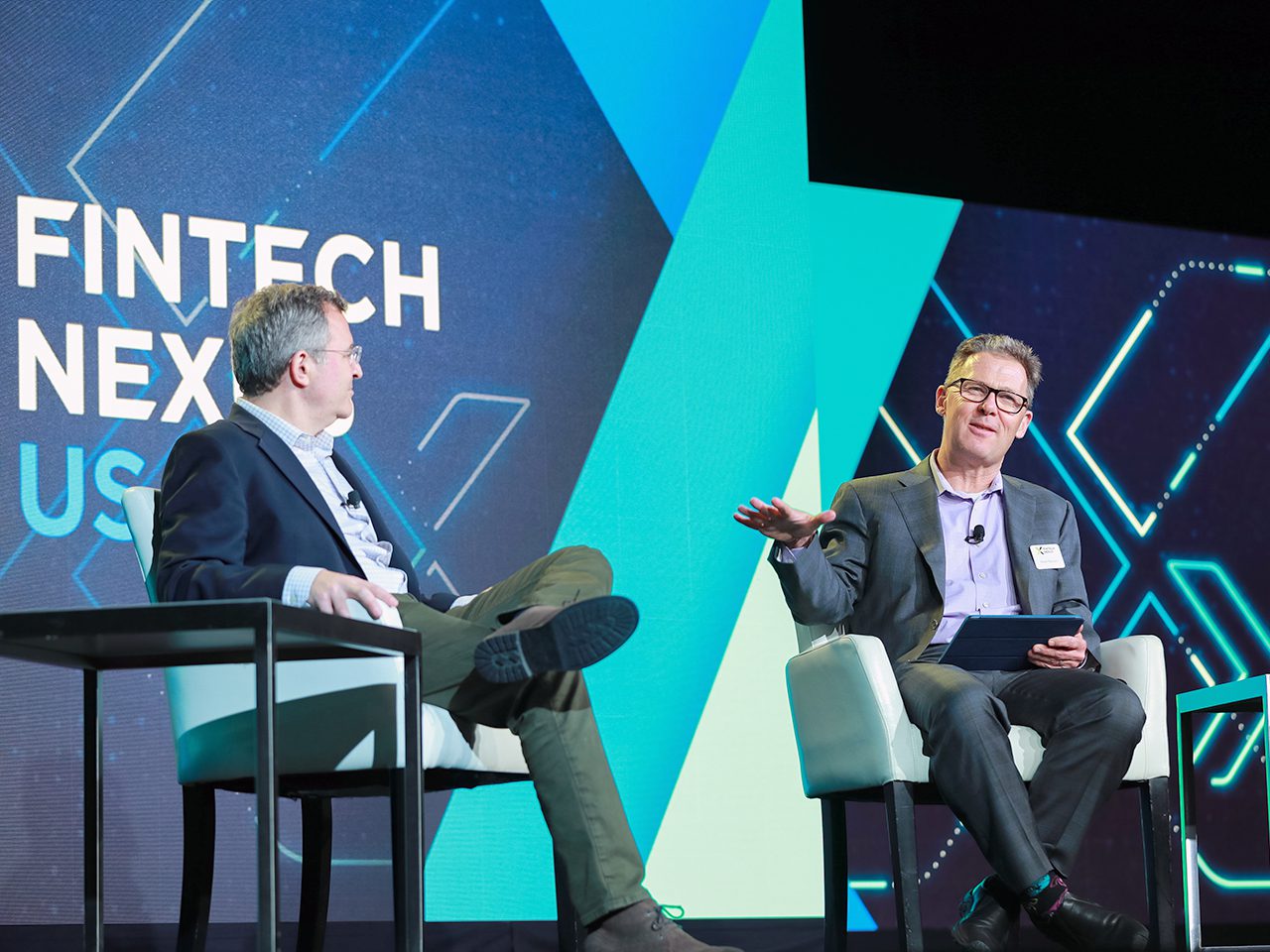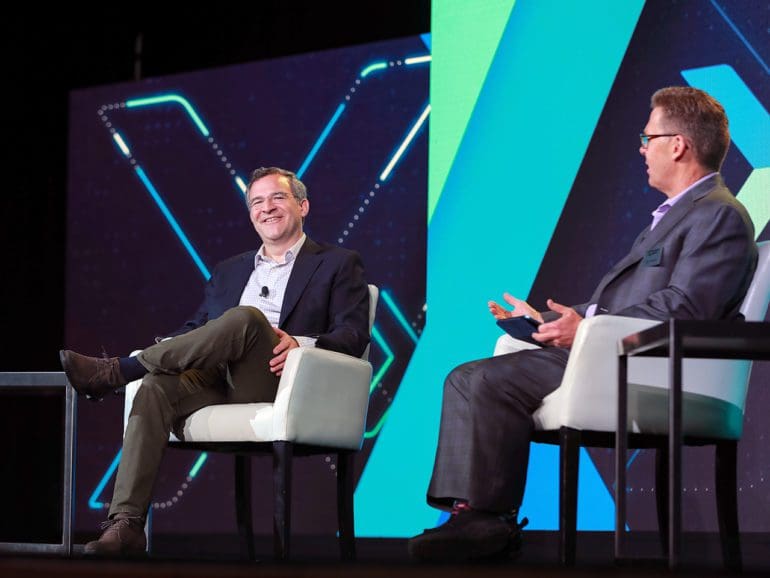Change continues to come to fintech financing, and there’s no sign of slowing down, Matt Harris said at Fintech Nexus 2022.
Harris, a partner at Bain Capital, shared his thoughts on the market in a conversation with Fintech Nexus co-founder and chairman Peter Renton.
Harris began from a consumer perspective that the current fintech environment is excellent. While areas such as proptech and aspects of lending have gone too far too soon, the state of B2B services is impressive.
“But even if you think about B2B solutions, the amount of investment that’s gone into it, the delta between the value propositions and the elegance of the design and the functionality of the products that consumers and businesses are enjoying today versus where we were five years ago, it’s amazing,” Harris said. “That said, as human beings do, we got a little over-exuberant about what all that is worth, in terms of equity valuations. Sadly now, we’re reaping the harvest of that over-exuberance.”
The Zoom effect on fintech
The pandemic played a role in the fervor, Harris admitted. Despite vowing not to conduct deals over Zoom, many capitulated, forced by competitors and the amount of money chasing deals.
Harris said the move online contributed to a “toxic” situation affecting how money was raised, and companies were valued. The victims will be investors, staff hired during the spree, who will be laid off, and the founders who have to perform up to the valuation.
Harris is shielded from that, however.
“For my part, I took 2021 off entirely,” he said. “I didn’t do a single deal.”
The Zoom era had its positives, Harris said. It turned business more global. Harris’ last deal was in London, and he suspects the next one will be too. Going online allows potential funders to better know more funders from more regions.
VCs are a small part of current fintech investing
With Harris watching from the sidelines, what did he think of other VCs chasing these higher valuations? For the most part, Harris wasn’t watching them. Actual VCs were responsible for 25% of dollars invested in fintech, with 75% coming from new entrants.
That’s the exciting development, he said. While VCs are far from perfect, he said they spend significant time on the activity. There is an art to it that will escape most amateurs.
What are the links between public and private markets?
Harris suspects that the current valuations say more about public markets than companies, per se. For most of the past two decades, a truism was that unhealthy companies should not go public. People forgot that.
“The public markets were maybe good at a few things, but evaluating hypergrowth and hyperdynamic unprofitable businesses, definitely not,” Harris said. “Look at the Russell 5000; this index tracks small-cap stocks. There are 3,200 companies in it because the public market universe has shrunk dramatically. They can’t even fill the Russell 5000 anymore.
“That happened for a reason. It happened because the public markets were broken. The majority of the money is passive indices. These very small sets of funds control the price, and everyone else is just a price taker. And so when those funds, those people, get excited, things go like this, and when they get unhappy, things go like that.”

Don’t be in a rush to exit
Given the current market, does Harris feel pressure to quickly exit a public company after taking a stake? He cautioned to be very careful about the companies you take public. What’s their predictability? Their profitability?
This is a financing event. If the goal is an exit, one should not be taking the company public. That’s foisting the risk on retail investors.
Harris doesn’t enter into a deal to sell quickly, but he admitted that it starts a clock for VCs. There does need to be a liquidity plan. He likes to walk with the companies on their journey, work with the founders, and carefully pick his time.
VC is different but hardly back to normal
Is the VC environment back to its pre-pandemic normal? It’s different, but Harris cautioned that the pre-pandemic environment was not typical. Over 20 years, valuations historically were five or six times revenue. They hotted 10x and peaked in the high 20s. Some private valuations were 100x or higher.
Where does the market settle? Get back to fundamentals, and work on your valuations. Remember, you are doing this work in an environment with plenty of broken companies.
Harris said that if you are a founder looking for your subsequent financing round, be prepared to move quickly. Expect prospective funders to be taking a more diligent look at your numbers. If your last round wasn’t excessive, you could have an up round because you’ve likely progressed.
Target people you have a relationship with because the market is quickly cooling.
“Right now, there’s a four- to the eight-week window where you can get a round done by new investors, and I suspect my midsummer that won’t be happening anymore,” Harris said. “That will lead us to the more likely scenarios of your insiders.”
When speaking with those insiders, admit you’d prefer to be raising in 2023 or even 2024. But to get there, you need X dollars. Perhaps you don’t want to be raising an insider round right now, but it will help you preserve your equity.
“That’s a very constructive conversation that you want to have now in parallel with the new outsider conversations,” Harris said. “Because in two months, that’ll be the only conversation available to you. And your insiders will be more scared than they are now.”
New investors don’t want to deal with messy situations, Harris added.
We’re in the middle of the three stages of financial services reinvention
Harris said financial services are amid a 50-year reinvention, and we’re nearing the halfway point. The first phase was moving from analog to digital. Your bank account is on your mobile phone, but there was little innovation beyond that. We’ve graduated to the second phase, which is limited financial services. Consumers and businesses are experiencing financial services through daily-use software. It’s early innings, but the effects are profound.
The final phase will see financial services delivered in a decentralized way, Harris said. Gone will be the control of big banks, a few credit card firms, and insurance carriers.
“Everything in my life has been an extremely bumpy road, and this will be no different, this path to decentralization,” Harris said. “And by the way, not least because governments hate it. This one, in particular, will be a nasty tussle because the incumbents always hate all of this.
“But founders beat the incumbents over time. I’m fine with that. But right now, we’re playing against the referee too. It’s going to be rough. But we raised a crypto fund last year (we’ve been investing in crypto for the last nine years). It has been one of the most fun, interesting and rewarding chapters in my investing life. I think of the talent and the space. The inarguable logic is only growing more and more compelling.”
Look beyond the mess toward true disruption
Harris said that pay attention to DeFi’s travails but didn’t discount the sector because of them. Startups are inherently messy.
But many DeFi startups are genuinely disruptive, so you should keep paying attention. Bain invested in a protocol called Compound, which allows people to lend and borrow money post collateral. It is managed programmatically and charges 10 basis points for highly complex loans.
Payments via stablecoins are a decade away from prime time, but if you can be profitable at 10 points when incumbents charge 300, that’s disruptive and worth the wait.
“That’s actual disruption in a way that the peer-to-peer lending folks had in mind but had no chance of,” Harris said. “They just did a different version of centralization. Never decentralization.”
The future is software
What will the fintech environment look like a decade from now? It will be so ubiquitous that we may not be using the word “fintech” anymore, Harris suggested, likening it to a current VC having an internet practice.
Fintech will be an ingredient of notable software companies. Banks better recognize this because they won’t be manufacturing products anymore. Most of the work will be done by technology. A strong brand and government relations strategy will be crucial, as will the ability to regulate and custody assets.
“The winners ultimately will be those software companies that realize how to incorporate best these potential services which at that time will be manufactured decentrally and so therefore actually easier to incorporate into code. So I think most of us will innovate ourselves out of a job.
“And I’m here for it.”


